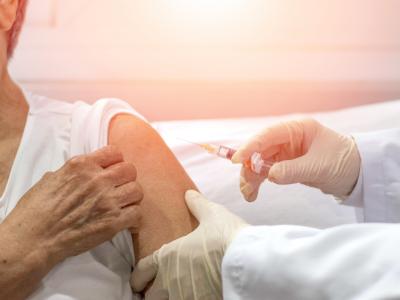Study finds resistance genes are abundant in Chinese estuaries
A team of researchers has detected a high abundance and diversity of antibiotic resistance genes in Chinese coastal estuaries, according to a study yesterday in Nature Microbiology.
For the study, researchers tested sediment from 18 estuaries over 4,000 km of coastal China and examined their relationship with bacterial communities, antibiotic residues, and socioeconomic factors. They found a total of 259 resistance genes in the estuary samples, with an average of 118 in each estuary at levels around 1 million resistance genes per gram of sediment. The detected genes conferred resistance to almost all major classes of antibiotics used in humans and animals, the authors said, and represented all major resistance mechanisms, including antibiotic deactivation, efflux pumps, and cellular protection.
The most common resistance genes found at each estuary were multidrug and beta-lactam resistance genes, followed by aminoglycoside and tetracycline resistance genes. Vancomycin resistance genes were found at all estuaries.
When the researchers analyzed antibiotic residues in estuary samples, they found five major antibiotic classes: diaminopyrimidines, tetracyclines, sulfonamides, fluoroquinolones, and macrolides. The concentrations of tetracyclines and macrolides were positively correlated with the total abundance of resistance genes.
Analysis of the relationship between socioeconomic factors and resistance-gene abundance showed that total population, gross domestic product, sewage, and aquaculture production were correlated with the abundance of aminoglycoside, multidrug, and sulfonamide resistance genes.
The authors conclude that anthropogenic activity "appears to be the major driver of abundance and diversity" of resistance genes found in estuaries, and that wastewater streams from municipal sewage treatment and aquaculture are a likely contributor.
Jan 30 Nat Microbiol abstract
Antibiotic use in travelers linked to colonization with MDR bacteria
A new study from researchers in Sweden and Finland has found that antibiotics taken during travel to subtropical regions can predispose travelers to colonization by drug-resistant bacteria with a high rate of co-resistance to other antibiotics.
In the study, which appeared yesterday in Travelers Medicine and Infectious Disease, the researchers analyzed the isolates of 90 people who had contracted extended-spectrum beta-lactamase-producing Enterobacteriaceae (ESBL-PE) while traveling abroad. The 90 participants were part of an earlier investigation, in which the researchers found that taking antibiotics for traveler's diarrhea (TD) increased the risk of colonization by ESBL-PE, particularly when traveling to regions with poor hygiene and weak antibiotic policy (such as South and Southeast Asia). One of the main takeaways of that study was that travelers should be advised against taking antibiotics for mild or moderate TD.
For this study, the researchers were trying to determine what percentage of those isolates were also co-resistant to non-beta-lactam antibiotics, as co-resistance can complicate treatment of ESBL-PE infections. They considered four major risk factors of colonization, including destination, age, TD, and antibiotic use.
Of the ESBL-PE isolates, 53%, 52%, 73%, and 2% were co-resistant to ciprofloxacin, tobramycin, co-trimoxazole, and nitrofurantoin, respectively. The rates were similar among those with TD and without TD. But when they compared the isolates of the travelers who had taken fluoroquinolones (FQs) to those who had taken no antibiotics, they found co-resistance rates for ciprofloxacin were 95% versus 37%, for tobramycin were 85% versus 43%, for co-trimoxazole were 85% versus 68%, and for nitrofurantoin were 5% versus 2%.
"Thus, use of FQs predisposes not only to contracting ESBL-PE strains but, indeed, also to selecting ESBL-PE strains co-resistant to certain clinically important non-beta-lactam antibiotics," the authors write.
"The data reveal that the perils of antibiotic use during travel are even greater than hitherto recognized."
Jan 30 Travel Med Infect Dis study













